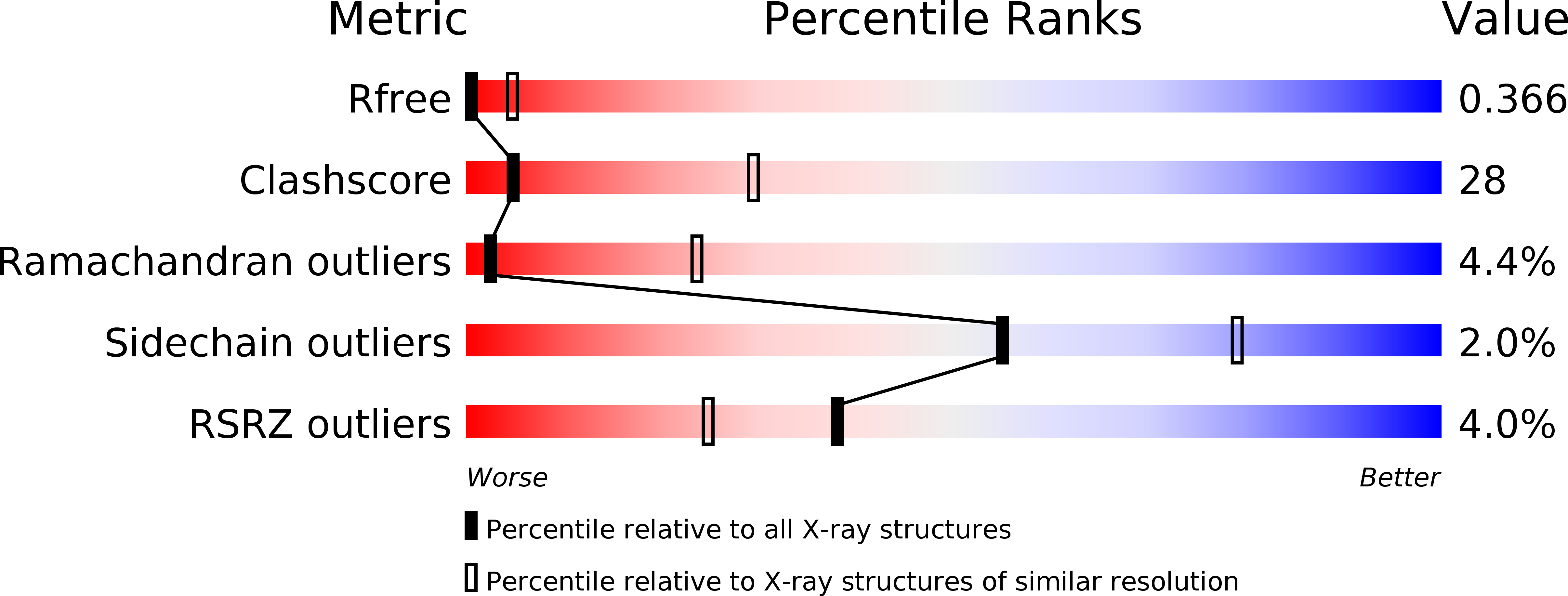
Deposition Date
2008-06-26
Release Date
2009-05-19
Last Version Date
2023-11-01
Entry Detail
PDB ID:
3DKW
Keywords:
Title:
Crystal Structure of DNR from Pseudomonas aeruginosa.
Biological Source:
Source Organism:
Pseudomonas aeruginosa (Taxon ID: 287)
Host Organism:
Method Details:
Experimental Method:
Resolution:
3.60 Å
R-Value Free:
0.37
R-Value Work:
0.32
R-Value Observed:
0.32
Space Group:
C 1 2 1


